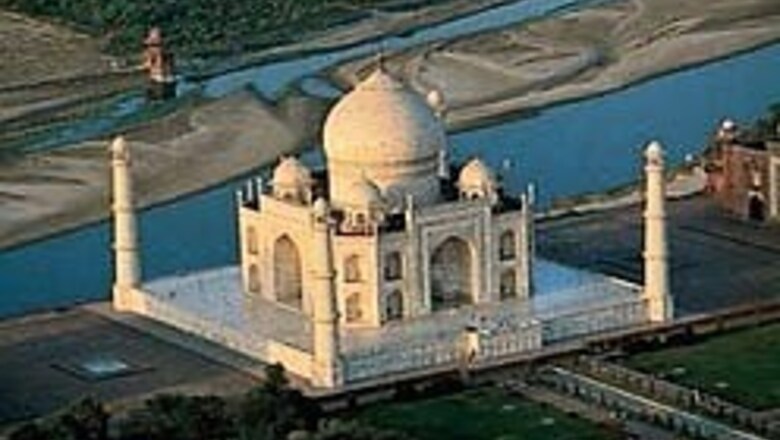
views
Agra: Once at the centre of a huge political furore, the ill-conceived Taj Corridor is now reduced to 80 acres of wasteland used as a dumping ground for civic garbage with a signboard on the gate reading "Court Property".
Even as the civic authorities are engaged in a massive beautification drive ahead of the Commonwealth Games, which may see an influx of at least 100,000 tourists to Agra, the grandiose Taj Corridor development project conceived between two World Heritage monuments -- the Taj Mahal and Agra Fort -- on the river Yamuna, has become an "eyesore" that is "spoiling the ambience" of the area.
The Rs.175-crore ($3.5 million) project was to be built on a platform raised from scooped silt of the river.
The Agra Development Authority (ADA) last week repaired the wall and mounted gates to restrict entry to what is described as "Court Property" but it is causing a lot of concern among conservationists and environmentalists, who want fresh initiatives to either dismantle it completely or green the barren patch.
When tourists look at the Taj Mahal from Agra Fort, what they see is disturbing -- heaps of stinking garbage, carcasses, graves of children dotting the structure and mounds of rubble that invite mosquitoes, dogs, snakes, crows and vultures.
"Such an ugly sight near the world's most beautiful monument can be repulsive and nauseating," said Neena, an NRI tourist.
The Archaeological Survey of India (ASI) needs at least Rs.50 crore to transform the area into a green cover with lush green lawns and bushes to enable tourists to stroll at leisure or watch the beauty of the Taj from a distance. The ASI's application with the apex court has been pending for years waiting for disposal.
Surendra Sharma, president of the Braj Mandal Heritage Conservation Society, said: "One thought that the Taj Corridor project would be taken up again by Chief Minister Mayawati, but she doesn't want to hear of it.
"It is possible for the locals to clean up the area with the help of NGOs but because the matter is with the Supreme Court, no one is taking any initiative."
The administration refused to comment, saying the matter was sub judice.
There was a plan to construct an amusement park, malls, commercial shops and walkways through dense wilderness to allow tourists to take a leisurely stroll in moonlit nights, according to the company National Projects Corp Ltd, which was assigned the task.
The corridor was to begin from Khan-e-Alam, close to the Taj Mahal, and end two kilometres towards the city behind Agra Fort. It was to be extended later to allow tourists to reach Etmaddaula and Ram Bagh on the other side of the river.
For three months, hundreds of tractors, earthmovers and machines worked round the clock to dig out silt and deposit it on the riverbank to create a new platform, which was laid with Rajasthani stones.
But, after a hue and cry from conservationists that the corridor would endanger the monument and allegations of large-scale corruption in the project, the central government suspended the work in 2003. The scandal involved government allotment of large tracts of land along the proposed corridor to a private builder for a song.
The matter now lies with the Supreme Court, which has banned any new construction at the site.
Some people in Agra still feel the project was a victim of politics. "The previous NDA (National Democratic Alliance) government used it as an excuse to settle scores with Mayawati in 2003," alleged Dalit activist Netra Pal Singh.
Some say the project could genuinely boost tourism, as it was envisaged to be located between the Taj Mahal and Agra Fort, both heritage monuments.
"It might even help save the dying river Yamuna once people start coming to the lush green lawns of the corridor. A rethinking with an open mind is called for," environmental activist Rajan Kishore told IANS.
"Now that a platform has already come up, it can be cleaned up and used for various social and cultural activities. Even a night bazaar can come. The hotels can be roped in. The army unit stationed nearby and in the fort can be asked to supervise. We need to innovate and improvise rather than keep complaining," Kishore said.
















Comments
0 comment